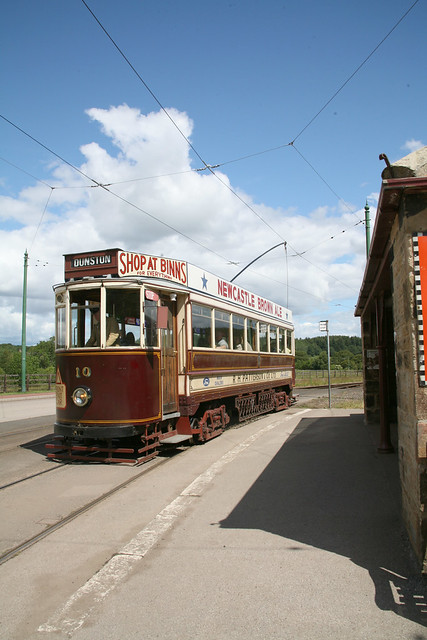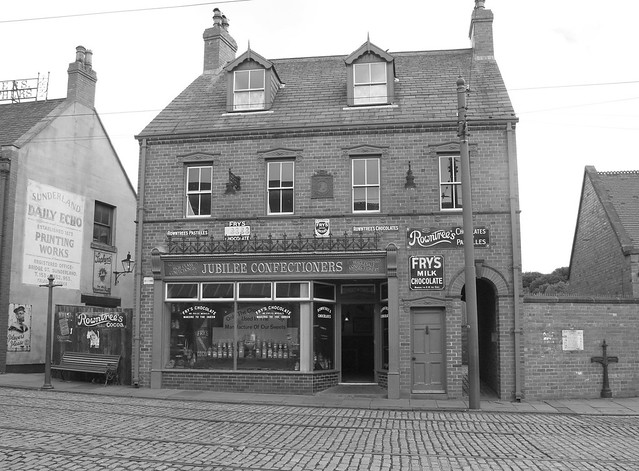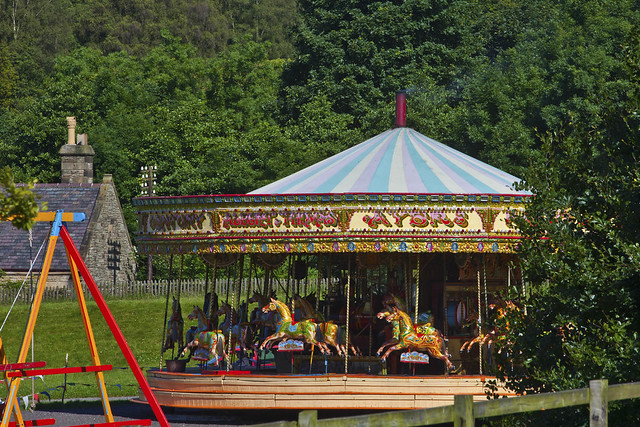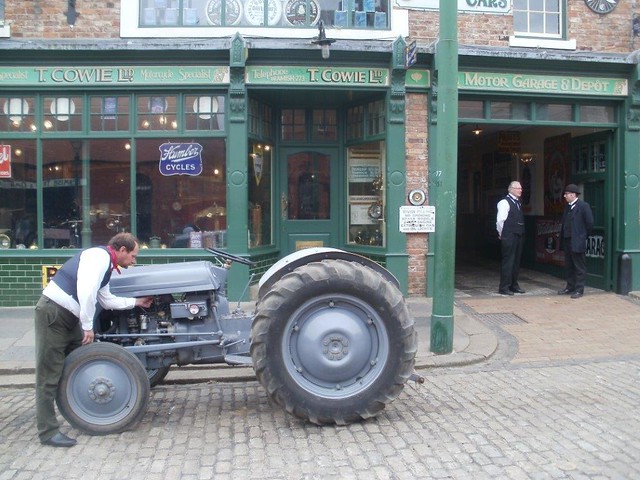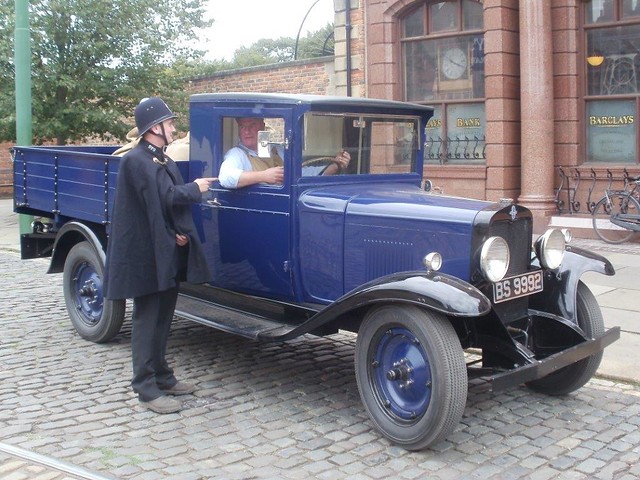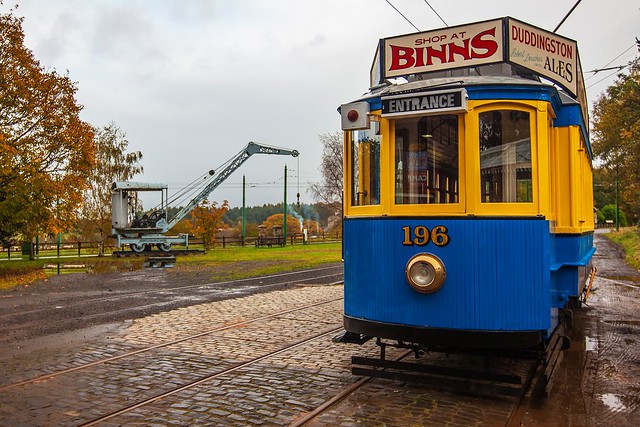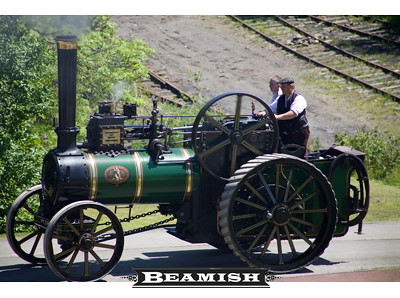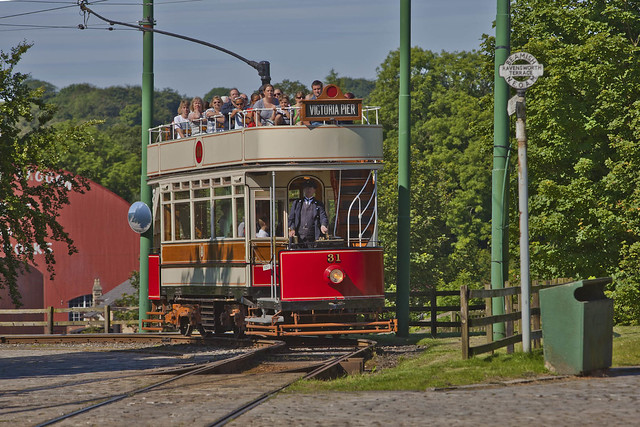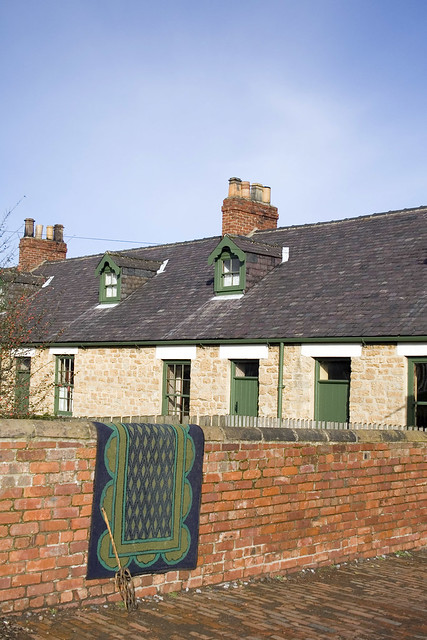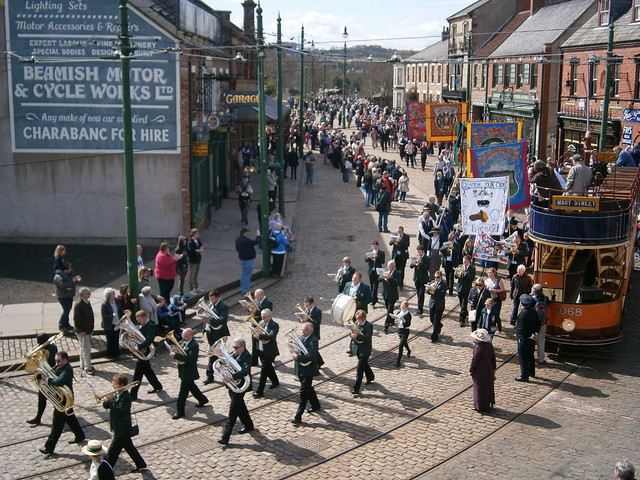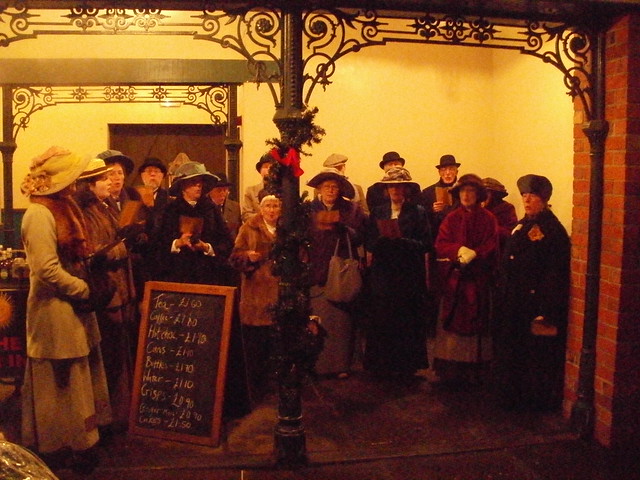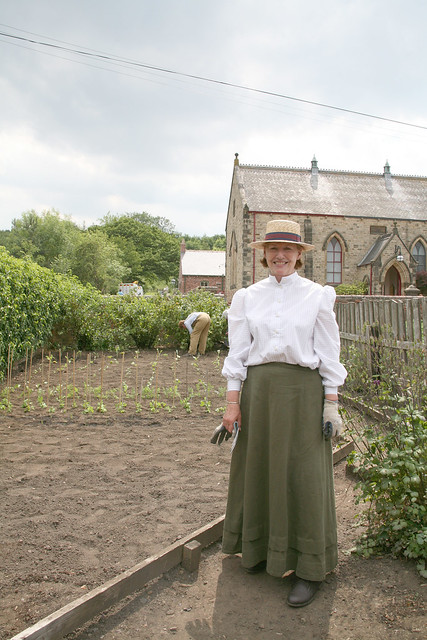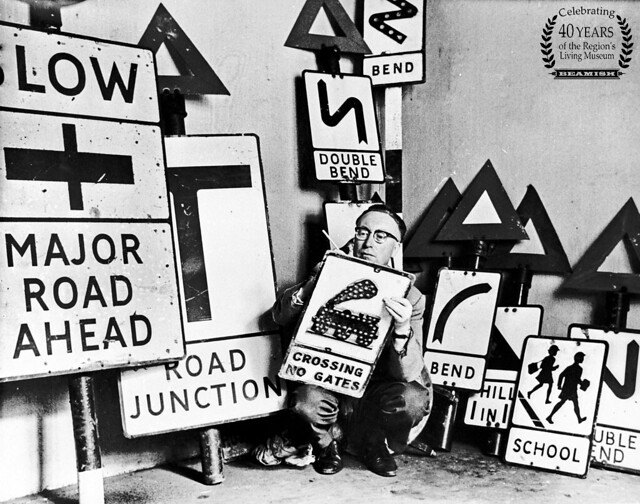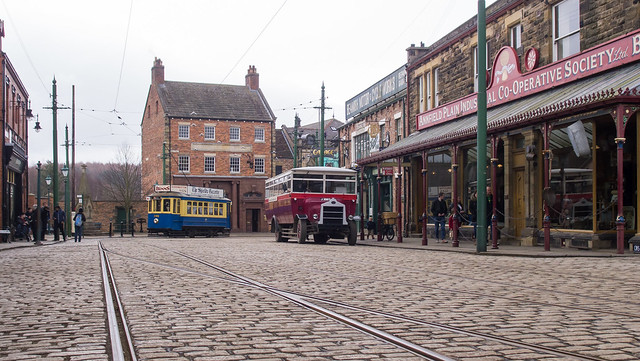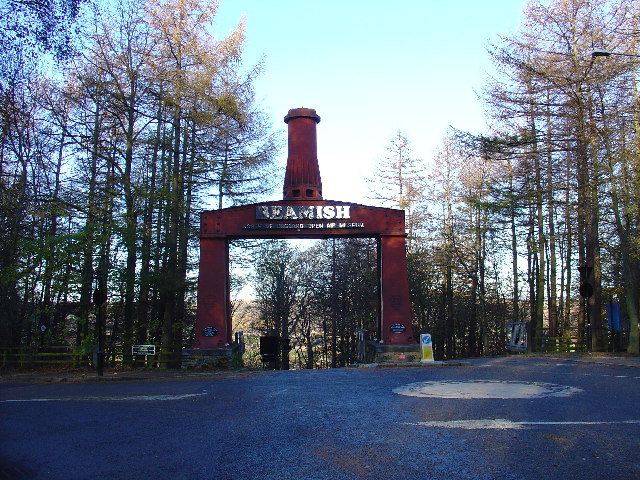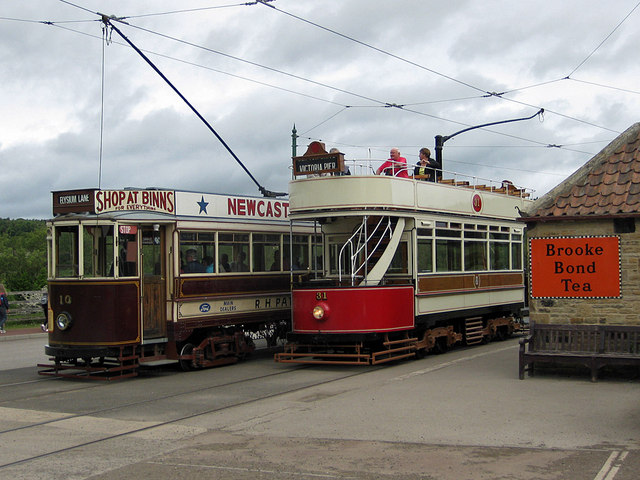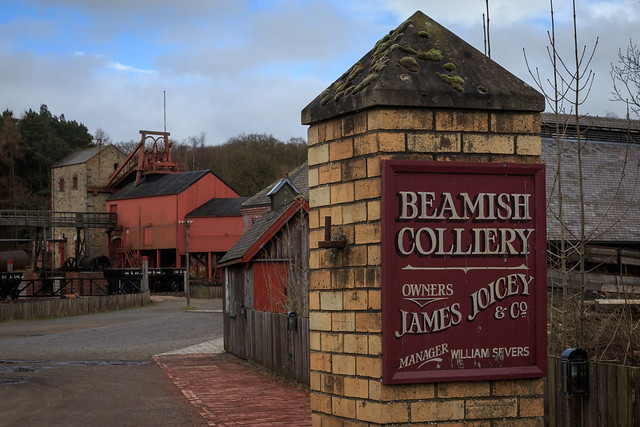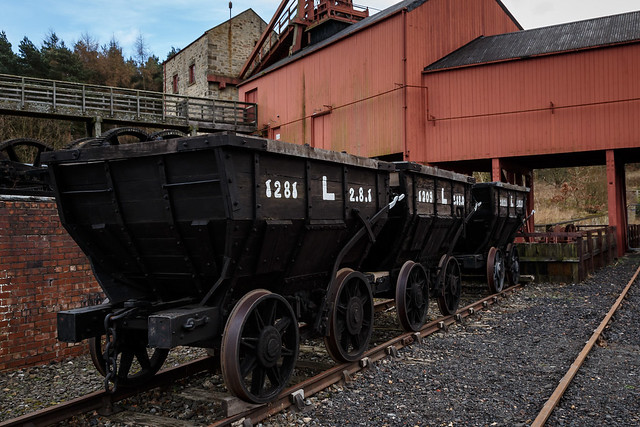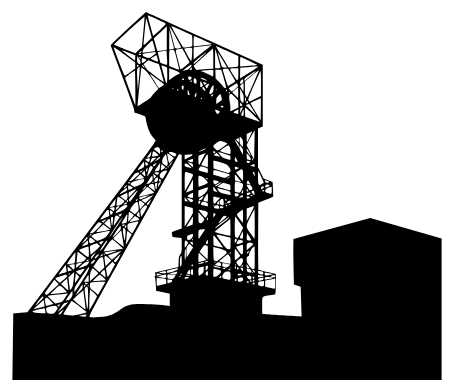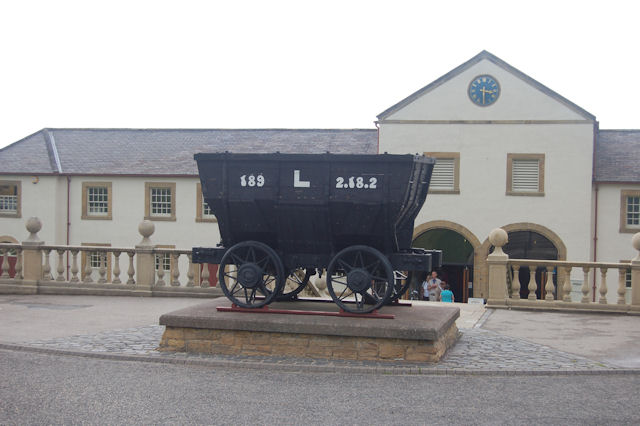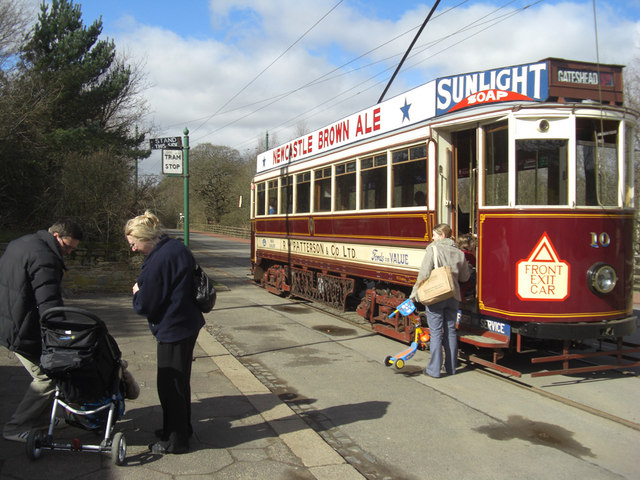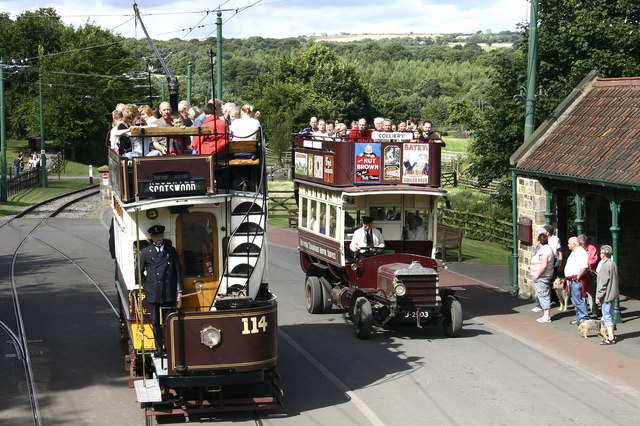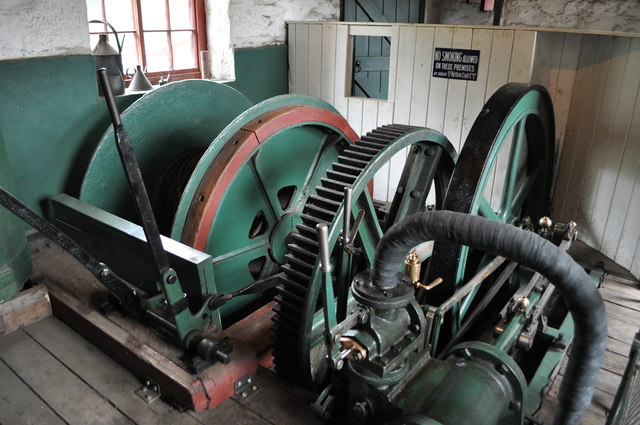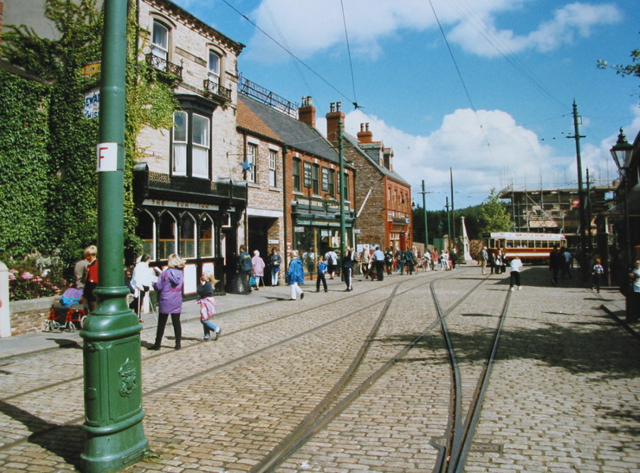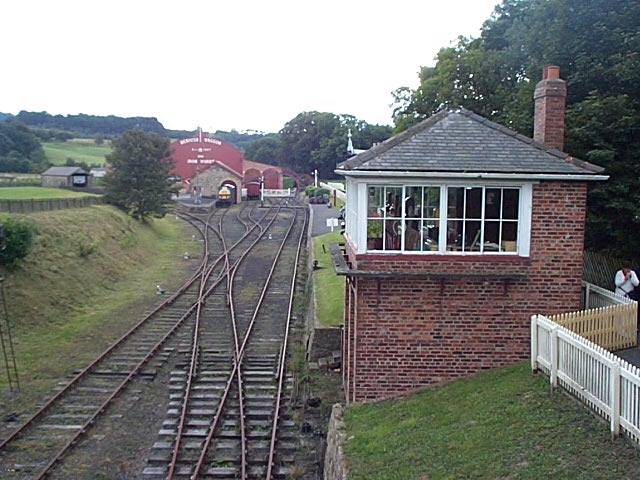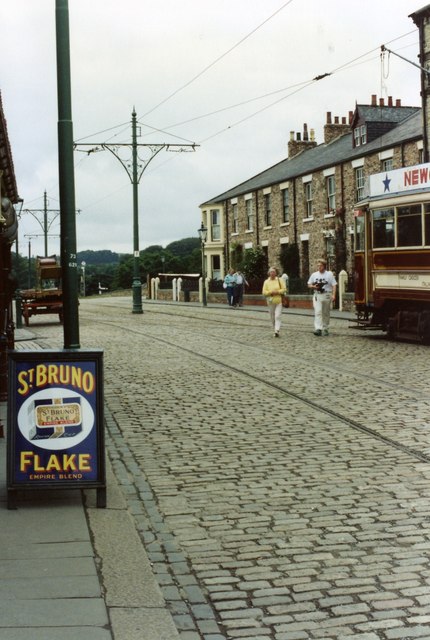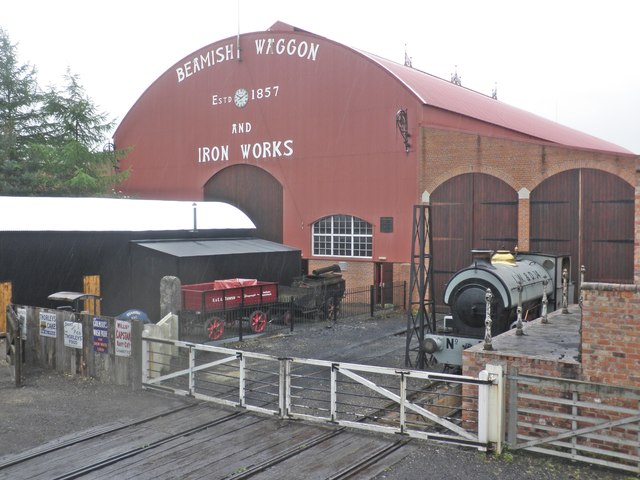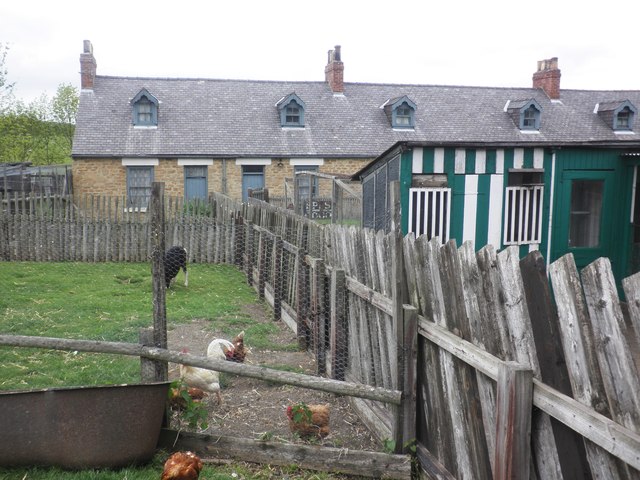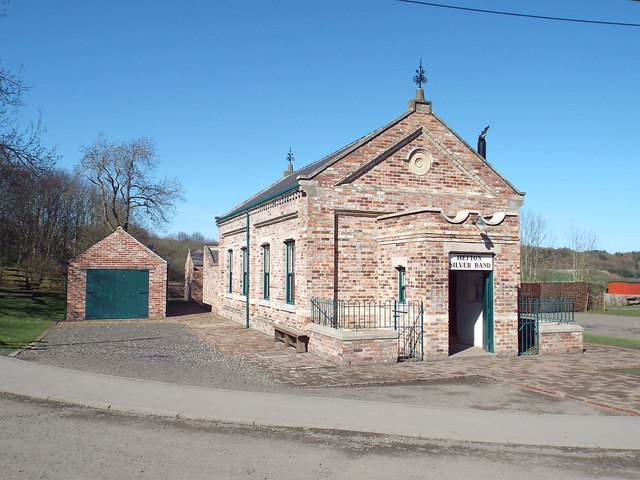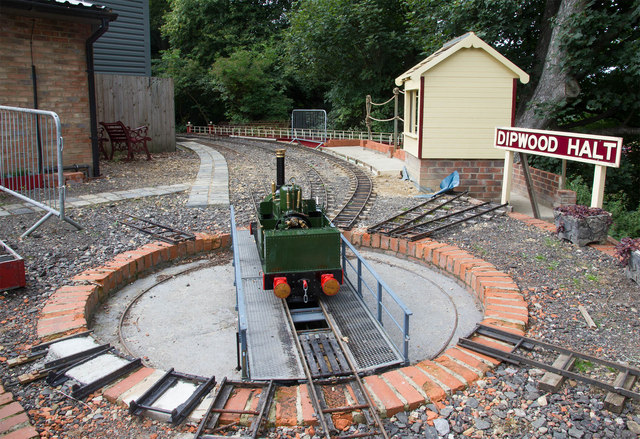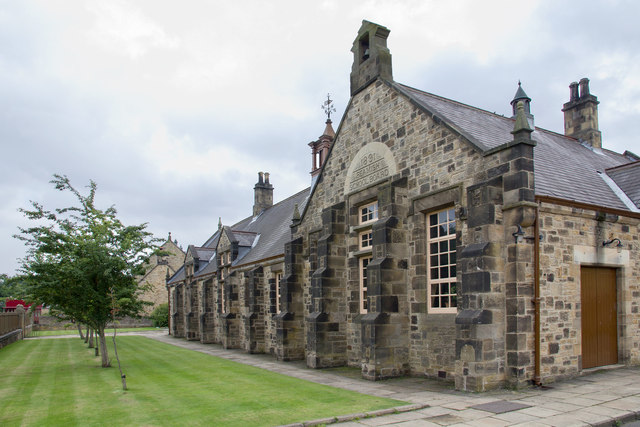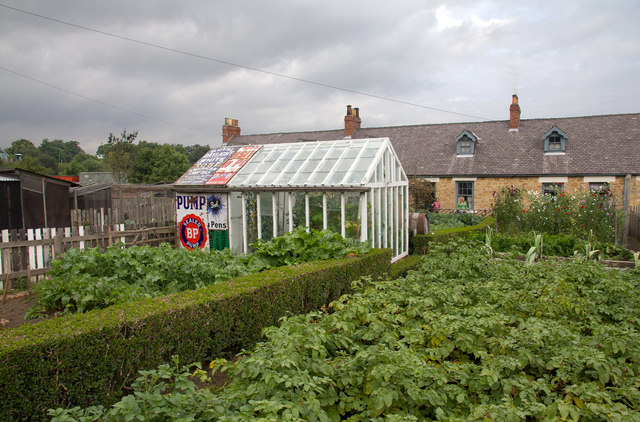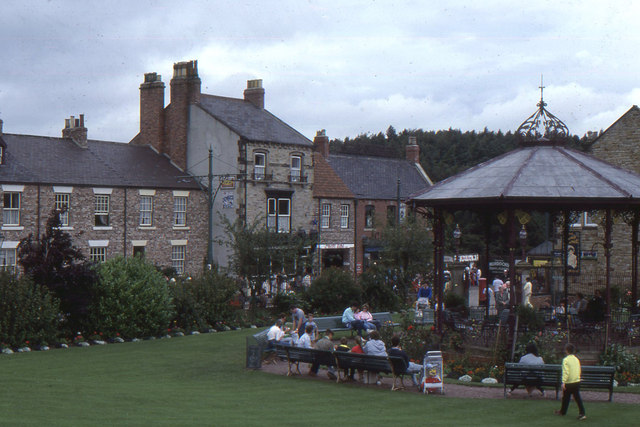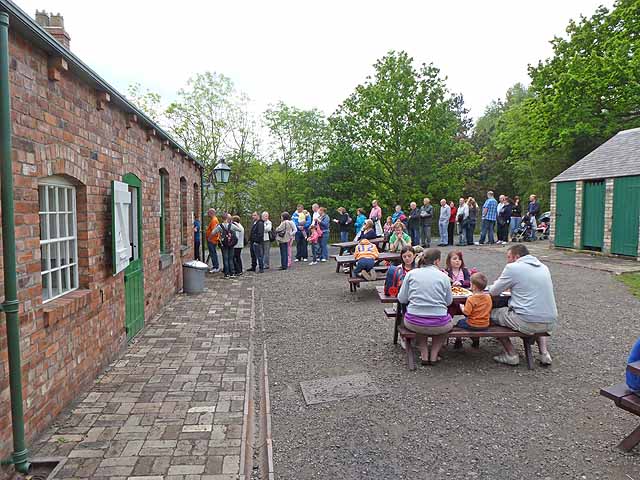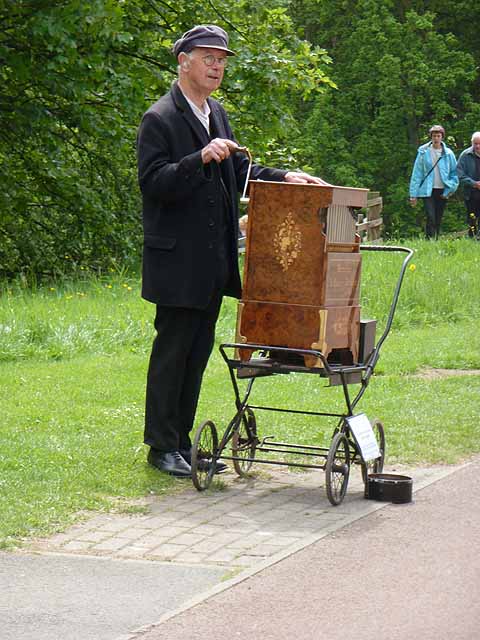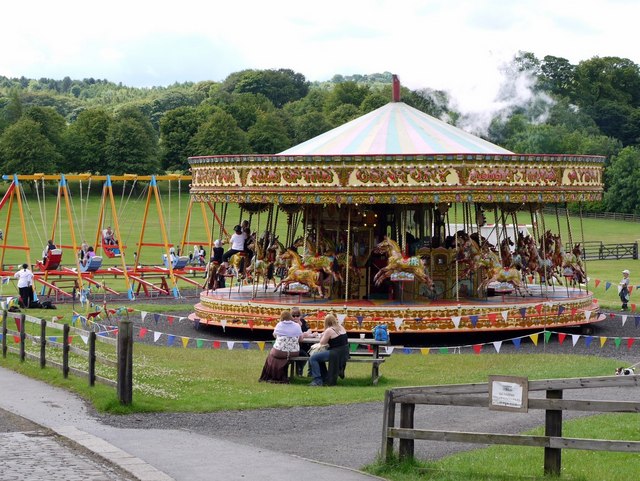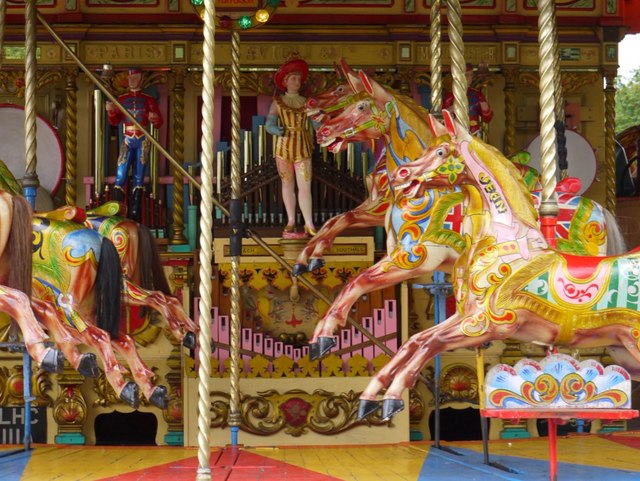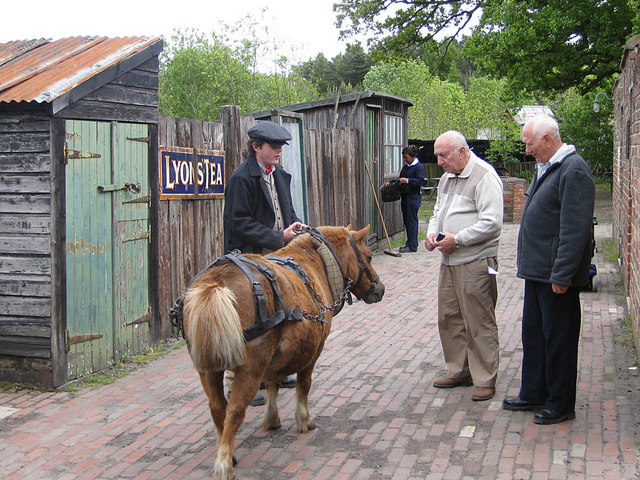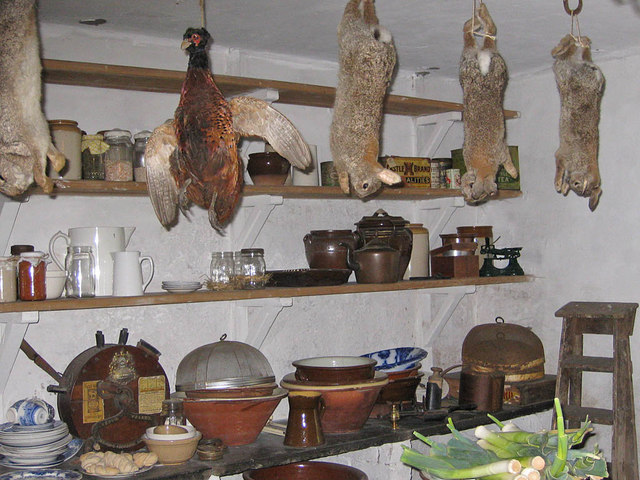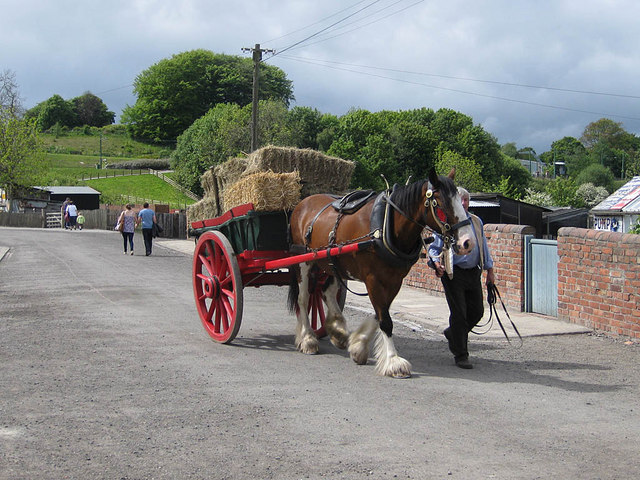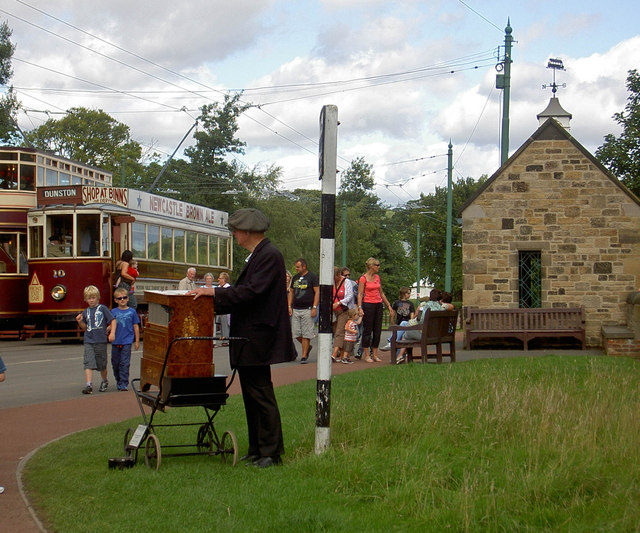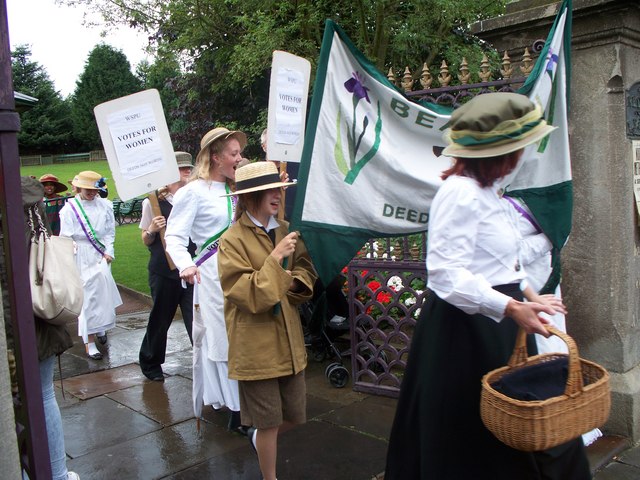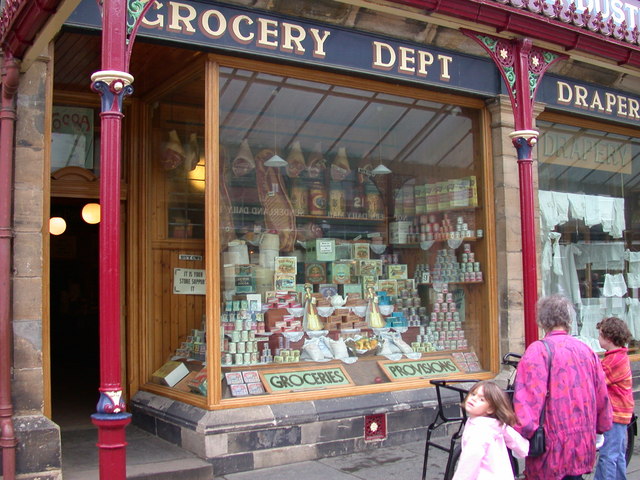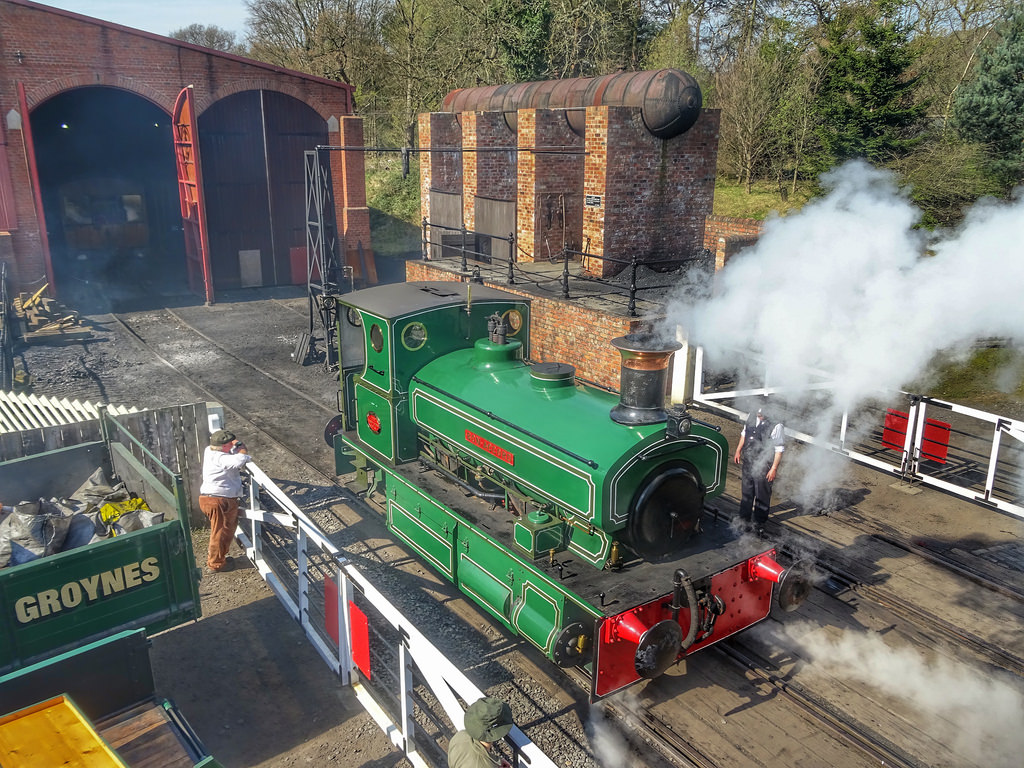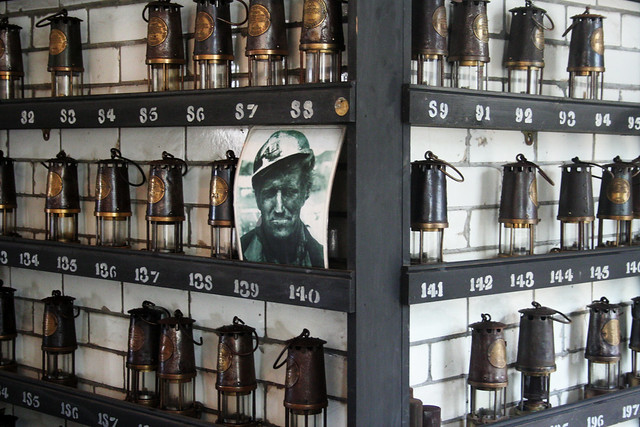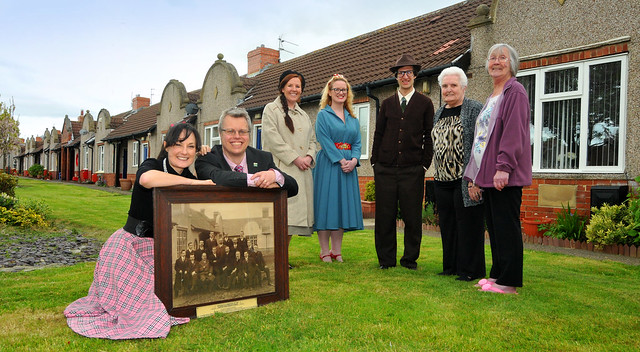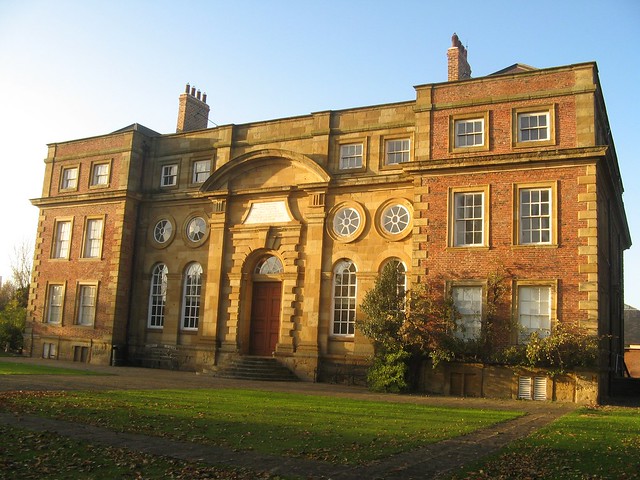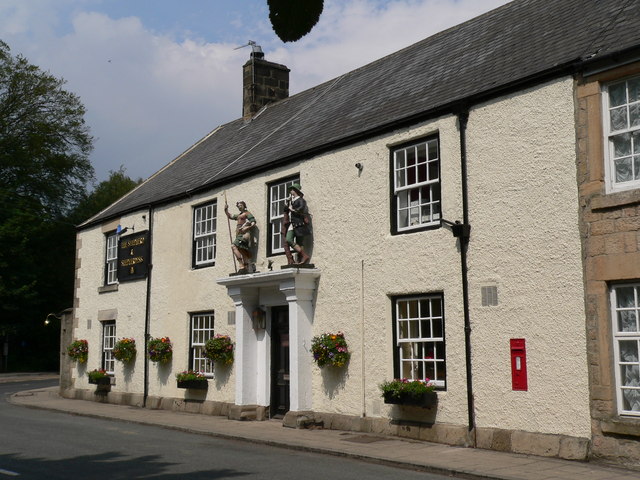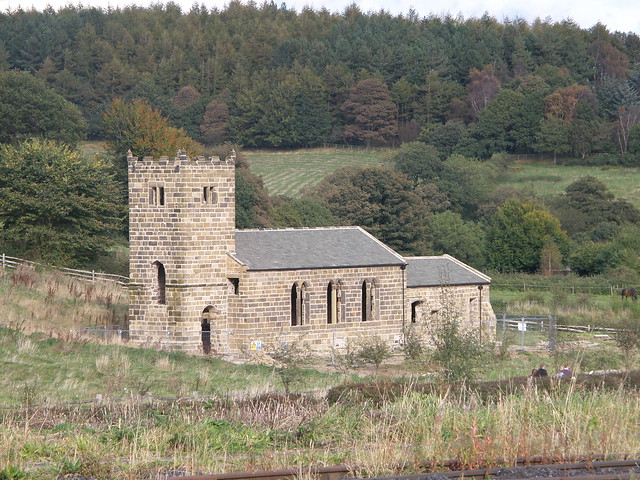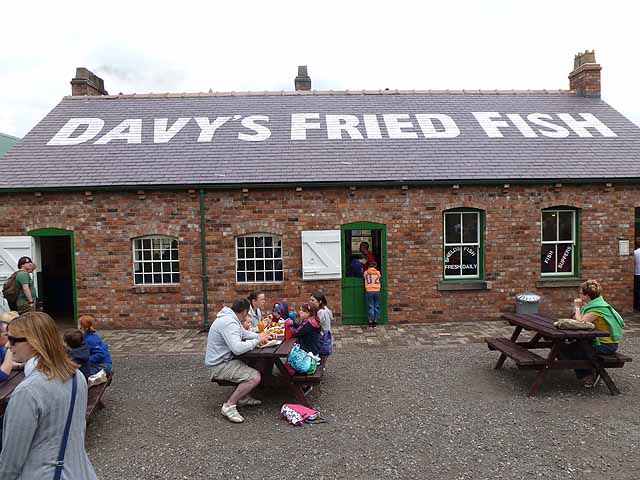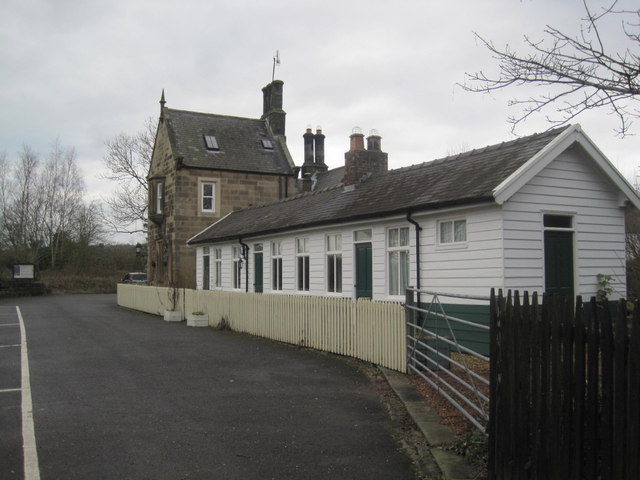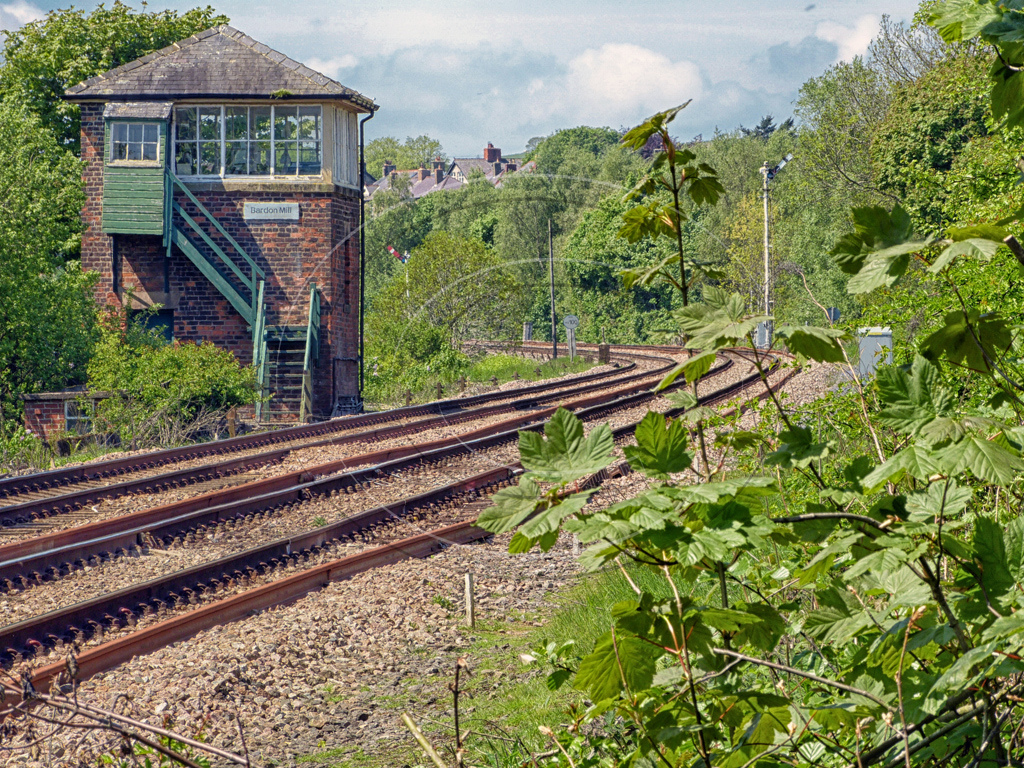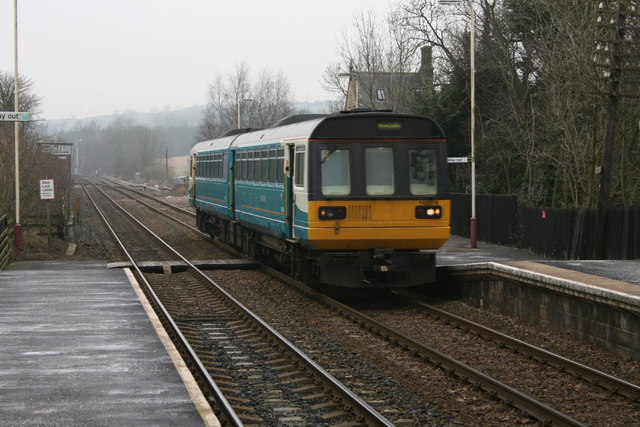Topics > Museums, Archives, Galleries and Collections > Beamish Museum
Beamish Museum
Beamish, the North of England Open Air Museum is an open-air museum located at Beamish, near the town of Stanley, County Durham, England. The museum's guiding principle is to preserve an example of everyday life in urban and rural North East England at the climax of industrialisation in the early 20th century.
Much of the restoration and interpretation is specific to the late Victorian and Edwardian eras, together with portions of countryside under the influence of industrial revolution in 1825. On its estate it utilises a mixture of translocated, original and replica buildings; a huge collection of artifacts, working vehicles and equipment; as well as livestock and costumed interpreters.
The museum has received a number of awards since it opened its present site to visitors in 1972 and has been influential on other "living museums". It is a significant educational resource, and helps to preserve some traditional north-country and rare livestock breeds.
History
Beamish is the first English museum to be financed and administered by a consortium of County Councils (Cleveland, Durham, Northumberland and Tyne and Wear) and it was the first regional open-air museum in England. The museum was first proposed in 1958 and the collections were established on the Beamish site in 1970 under director Frank Atkinson (b. 1924, d. 2014). Atkinson, realising that the region's traditional industries of coal-mining, shipbuilding, and iron and steel manufacture were disappearing along with the communities that served them, was anxious to preserve the customs, traditions and ways of speech of the region. He said, "It is essential that collecting be carried out quickly and on as big a scale as possible. It is now almost too late."
Atkinson adopted a policy of "unselective collecting" — "you offer it to us and we will collect it." The people of the region responded with donations of all kinds ranging from small everyday objects to steam engines and shops, filling an entire army camp of 22 huts and hangars at Brancepeth.
The first exhibition was held in Beamish Hall in 1971, and the present site was opened to visitors for the first time in 1972 with the first translocated buildings (the railway station and colliery winding engine) being erected the following year. The approximately current site, once belonging to the Eden and Shafto families, is a basin-shaped steep-sided valley with woodland areas, a river, some level ground and a south-facing aspect. Since 1986 visitors have entered the museum, which has been 96% self-funding for some years (mainly from admission charges), through an entrance arch formed by a steam hammer, across a former opencast mining site and through a converted stable block (from Greencroft, near Lanchester, County Durham).
In 2012 the museum acquired a block of prefabricated houses from Kibblesworth which were originally designed by Sir Edwin Airey. It is intended that these will be part of a 1950s exhibition area. In April 2016, a £17m plan to expand the museum to include a 1950s village was approved by Durham council county. The Heritage Lottery Fund had already awarded £10.7m towards the costs, and foundations and trusts a further £3.3m; the museum still had to raise the remaining £2.4m at the time that the plans were approved. The expansion plans also feature the former Grand Electric Cinema from Ryhope, Sunderland, which will be demolished and re-erected at Beamish, a working windmill, and a Georgian coach house where visitors to the museum will be able to spend the night.
1913
Town
The town area, officially opened in 1985, depicts chiefly Victorian buildings in an evolved urban setting of 1913. These include the Annfield Plain Co-Operative Store (with operating cash carrier system); a terrace of "professionals"’ houses (from Gateshead), "occupied" by a music teacher, dentist's surgery and family home, and solicitor’s office; a pub (the Sun Inn from Bishop Auckland); town stables and carriage shed (utilising iron roof trusses from Fleetwood) housing an extensive collection of horse-drawn vehicles; a branch office of the Sunderland Daily Echo, stationer’s and printshop; a sweet shop and manufactory; a garage; a branch of Barclays Bank (using components from Southport and Gateshead), and a masonic temple (from Sunderland). There is a bandstand (from Gateshead) in a public park, together with drinking fountains and other examples of street furniture.
The bakery opened in 2014, and future plans for the town include a shopping arcade, dispensing chemist the groundwork for which has started in 2014 on the corner between the garage and new bakery(using fittings from Stockton-on-Tees), as well as fire and police stations and other municipal buildings. The museum also has the components of an early cinema, and those of a gasworks from Milnthorpe.
Railway station
A typical North Eastern Railway station is reconstructed on the edge of the town. The station building itself came from , just a few miles from Beamish, which both originally lay on the Stanhope and Tyne Railway. The signal box came from , near Consett; the goods shed from ; and coal drops from .
The station is dominated by the Regional Museums Store (completed in 2002, and externally disguised as "Beamish Waggon and Iron Works, estd 1857"), which Beamish shares with Tyne and Wear Museums. This houses, amongst other things; railway rolling stock and other vehicles; a large marine diesel engine by William Doxford & Sons of Pallion, Sunderland (1977); and several boats including the Tyne wherry (a traditional local type of lighter) Elswick No. 2 (1930). The store is only open at selected times, and for special tours which can be arranged through the museum; however, a number of viewing windows have been provided for use at other times. Adjacent is an events field and fairground with a set of Frederick Savage built steam powered Gallopers dating from 1893.
Colliery village
In view of the impact that coal mining has had on its region, the museum has major collections related to this industry. Exhibits include the museum's Mahogany Drift Mine, a coal mine original to the site where it is possible to take an underground tour. The colliery is dominated by the regularly steamed 1855 vertical 'Crowther' winding engine (from the nearby Beamish 2nd Pit), screens (from Gateshead) and a waste tip. There are a number of industrial steam locomotives (including rare examples by Stephen Lewin, from Seaham, and Black, Hawthorn & Co), and many chaldron wagons (the region’s traditional type of colliery railway rolling stock, and which became a symbol of Beamish Museum). There is usually a pit pony on site and the museum has a significant collection of safety lamps. The surrounding village includes miners' cottages from Hetton-le-Hole, the Wesleyan Methodist chapel from Pit Hill, and East Stanley Board School (which has led to a special relationship between the museum and the successor primary school). Evidence can be seen of traditional pastimes such as pigeon racing and quoits. An Edwardian coal-fired Fish and Chip shop, Davy's Fried Fish named for Edwardian chip shop owners the Davy Brothers of Winlaton Mill, Gateshead, opened in Summer 2011 next to the Chapel. It serves fish and chips cooked in traditional beef dripping. The locomotive Coffee Pot No 1 is often in steam during the summer.
Home Farm
This farm complex, preserved in situ, was rebuilt in the mid-nineteenth century as a model farm incorporating a horse mill and a steam-powered threshing mill. It is a base for some of the museum’s agricultural activities. In early 2014 Home Farm was converted to represent northern rural life in the 1940s.
The Georgian North (1825)
The eastern side of the museum site is based around the original Pockerley Manor farm, a 15th-century foundation with a domestic wing of c.1720. The back part of the house was a bastle house, with ceiling beams carbon-dated to the 14th century, although the structure is believed to be older. The surrounding farmlands have been returned to a post-enclosure landscape with ridge and furrow topography, divided into smaller fields by traditional riven oak fencing. The land is worked and grazed by traditional methods and breeds.
Through this scene passes a pack pony track and the recently constructed wooden- and Pockerley waggonways (see below) serving a replica coal pit with horse-worked winding gin. It is intended to expand this area by the restoration of an existing watermill on the Beamish Burn (River Team) (where there are also remains of forges), and the development of a rural community including the re-erection of St Helen’s Church from Eston in North Yorkshire.
Transport
The museum contains much of transport interest, and the size of its site makes good internal transportation for visitors and staff purposes a necessity.
Railway
In the railway station yard, a variety of wagons are on display. Under the footbridge (from Crook) the line extends to the far end of the town, a distance of ¼ mile. The line used to connect to the colliery sidings until 1991 when it was lifted so that the tram line could be extended. Regular steam operation ceased in 1995 due to the lack of permanently available working locomotives. From the nearby Bowes Railway, Andrew Barclay locomotives No. 22 and W.S.T. have made visits in recent years. The museum’s restored North Eastern Railway coach was moved to the Tanfield Railway, also nearby, but it returned to Beamish in 2012 for restoration and use.
Resident locomotives include NER Class C1 freight engine No. 876 (British Railways Class J21 No. 65033), built at Gateshead in 1889. After lying out of use since 1984 it was moved to the North Norfolk Railway for restoration and returning to steam in 2007. A syndicate has now been formed and an appeal made for contributions. The museum also formerly operated its Hawthorn Leslie industrial engine No. 14.
During 2009 the main running line to the far end of the town was relaid so that passenger rides could recommence from the station during 2010. In February 2011 the museum received a 1923-built LNER Y7 Class 0-4-0T engine on a three-year loan from the North Norfolk Railway. The engine will run a passenger service at Rowley Station on weekends during the summer season.
Currently under restoration at the Severn Valley Railway is 0-4-4T Dunrobin, which Beamish purchased in 2010 for use on the Rowley Station line. In 2012 Beamish also purchased 0-6-0 Saddle Tank 'Newcastle'; restoration is planned.
Pockerley Waggonway
In 1999 Beamish opened the Pockerley Waggonway, recreating a railway at the transition from wagonway to steam railway in 1825. There is a short length of track, and the locomotives are housed and maintained in a "great shed", inspired by lost buildings from Timothy Hackworth’s Shildon railway works and incorporating some material from Robert Stephenson and Company’s Newcastle works.
Visitors to the museum can ride in an unsprung carriage behind one of three replica steam locomotives on the railway:
Wooden waggonway
Following creation of the Pockerley Waggonway, the museum went back a chapter in railway history to create a horse-worked wooden waggonway.
Tramway
Beamish is home to several electric trams, some of which operate daily on the track which makes a circuit of the museum site forming an important element of the visitor transportation system. It is also the longest preserved tramway in the country.
Trolleybuses
The museum has collected a couple of trolleybuses.
Motor buses
The replica buses are used on a regular service between the town and colliery village.
Other road vehicles
The museum owns other motor and steam vehicles, more than twenty pedal cycles and several motorcycles. From its extensive collection of horse-drawn vehicles, charabancs are to be seen in public service in the summer.
Agriculture
The museum’s two farms help to preserve traditional northcountry and in some cases rare livestock breeds such as Durham Shorthorn Cattle; Clydesdale and Cleveland Bay working horses; Dales ponies; Teeswater sheep; Saddleback pigs; and poultry.
Regional heritage
Other large exhibits collected by the museum include a tracked steam shovel, and a coal drop from Seaham Harbour.
In 2001 a new-build Regional Resource Centre (accessible to visitors by appointment) opened on the site to provide accommodation for the museum’s core collections of smaller items. These include over 300,000 historic photographs, printed books and ephemera, and oral history recordings. The object collections cover the museum’s specialities. These include quilts; "clippy mats" (rag rugs); Trade union banners; floorcloth; advertising (including archives from United Biscuits and Rowntree's); locally made pottery; folk art; and occupational costume. Much of the collection is viewable online and the arts of quilting, rug making and cookery in the local traditions are demonstrated at the museum.
The site has been used as the backdrop for many film and television productions, particularly Catherine Cookson dramas produced by Tyne Tees Television. Some of the children’s television series Supergran was shot here.
Critical reception
The unselective collecting policy created a lasting bond between museum and community and the supporting Friends organisation was established in 1968 before the Beamish site had been occupied. Visitor numbers rose rapidly to around 450,000 p.a. during the first decade of opening to the public, and the museum became Museum of the Year in 1986 and won the European Museum of the Year Award in 1987. It was designated by the Museums, Libraries and Archives Council in 1997 as a museum with outstanding collections, and was Living Museum of the Year in 2002.
The museum was winner of the North East England Tourism awards' 'Large Visitor Attraction of the Year' title in 2014 and 2015. The following year it was awarded the bronze prize in the same category at the VisitEngland awards.
In responding to criticism that it trades on nostalgia
the museum is unapologetic. A former director has written: "As individuals and communities we have a deep need and desire to understand ourselves in time." It can also demonstrate its benefit to the contemporary local economy. Beamish was influential on the Black Country Living Museum, Blists Hill Victorian Town and, in the view of museologist Kenneth Hudson, more widely in the museum community and is a significant educational resource locally.
Access
The museum is accessible by car from the A1(M) or by bus from Durham or Newcastle and is near Chester-le-Street and Washington, Tyne and Wear. Opening and operating times and details of special events are given on the museum website. Bus services 28 and 28A operate from Newcastle Pilgrim Street and Gateshead Interchange to Beamish Museum.
Visit the page: Beamish Museum for references and further details. You can contribute to this article on Wikipedia.
Mining Village & Colliery
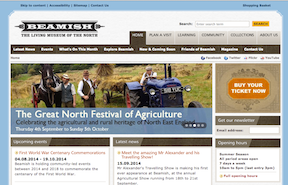
from http://www.beamish.org.uk/
Beamish Museum
- Official Website of Beamish Museum.
Information about the museum, whats on, planning your visit etc. The site includes a section on learning with information for schools and adult learning & …
Added by
Simon Cotterill
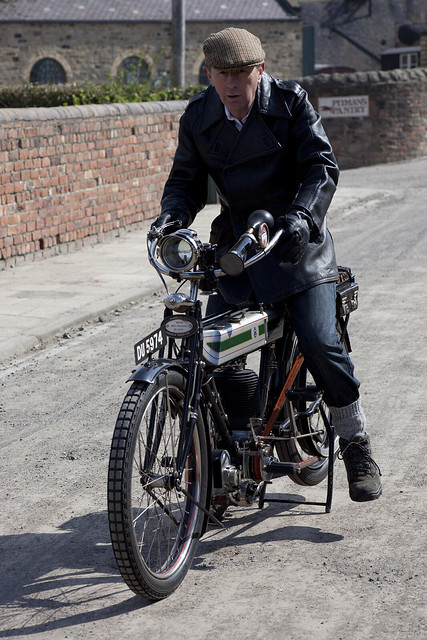
from Beamish (flickr)
Vintage Motorcycle - Beamish Power from the Past 2010
Pinned by Simon Cotterill
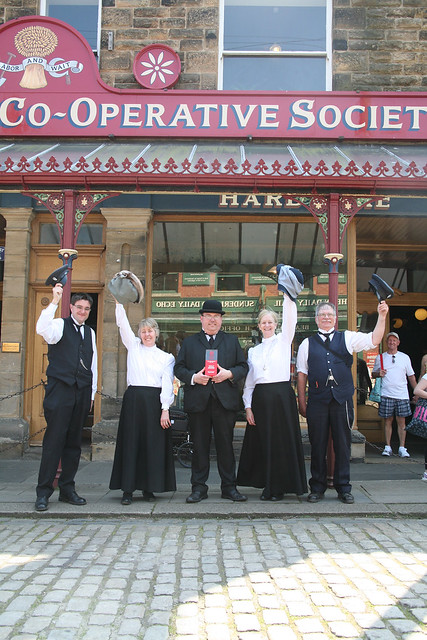
from Beamish (flickr)
Beamish- England's Large Tourist Attraction of the Year 2012
Pinned by Simon Cotterill
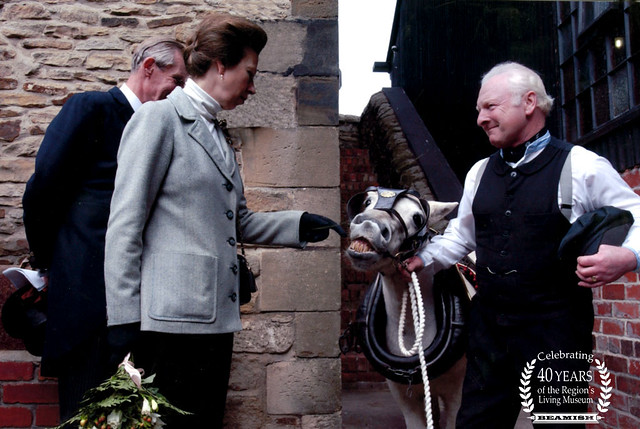
from Beamish (flickr)
Beamish at 40 - Pip the Pit Pony meets HRH Princess Anne!
Pinned by Simon Cotterill

Co-Curate Page
1913
- < 1912 | 1913 | 1914 > In Northern England: 16th September 1913: Floods in Newcastle. 1st October 1913: opening of Darras Hall railway station.
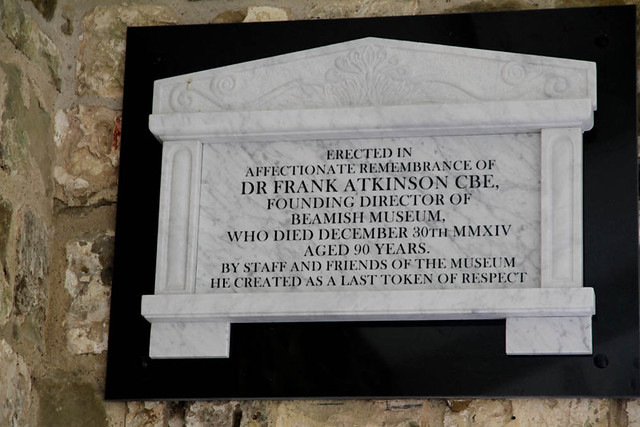
Co-Curate Page
Frank Atkinson (1924 - 2014)
- Overview About Frank Atkinson Frank Atkinson CBE was a visionary museum director and curator, who founded the Beamish Museum. Atkinson was born in Barnsley, South Yorkshire on 13th April 1924. …
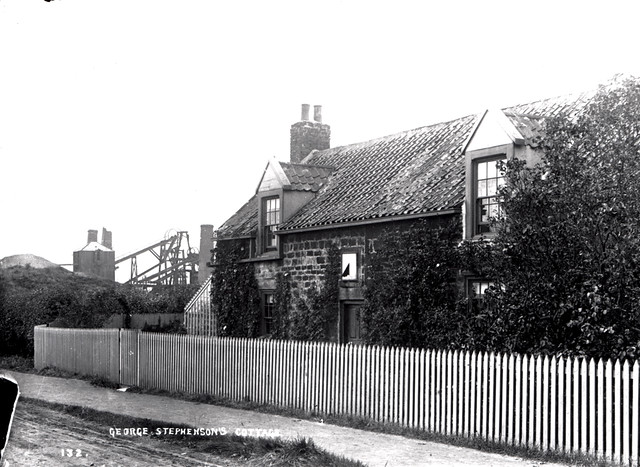
Co-Curate Page
Victorian Era
- 1837-1901 Victorian Times - School Project by Lucy Cotterill, age 8. See my separate page about Queen Victoria. I have also made a slide on The History of Whitley Bay.

Co-Curate Page
Annfield Plain
- Overview About Annfield Plain Map Annfield Plain is a village in County Durham, located between Stanley and Consett. The village's past is strongly associated with coal mining, which can be …

Co-Curate Page
1825
- < 1824 | 1825 | 1826 > In Northern England: 27th September 1825; opening of the Stockton and Darlington Railway. 1825: foundation of the Newcastle and Carlisle Railway company. 1825: Locomotion No …


from http://www.beamish.org.uk/
Beamish Museum
- Official Website of Beamish Museum.
Information about the museum, whats on, planning your visit etc. The site includes a section on learning with information for schools and adult learning & …
Added by
Simon Cotterill

from Beamish (flickr)
Vintage Motorcycle - Beamish Power from the Past 2010
Pinned by Simon Cotterill

from Beamish (flickr)
Beamish- England's Large Tourist Attraction of the Year 2012
Pinned by Simon Cotterill

from Beamish (flickr)
Beamish at 40 - Pip the Pit Pony meets HRH Princess Anne!
Pinned by Simon Cotterill

Co-Curate Page
1913
- < 1912 | 1913 | 1914 > In Northern England: 16th September 1913: Floods in Newcastle. 1st October 1913: opening of Darras Hall railway station.

Co-Curate Page
Frank Atkinson (1924 - 2014)
- Overview About Frank Atkinson Frank Atkinson CBE was a visionary museum director and curator, who founded the Beamish Museum. Atkinson was born in Barnsley, South Yorkshire on 13th April 1924. …

Co-Curate Page
Victorian Era
- 1837-1901 Victorian Times - School Project by Lucy Cotterill, age 8. See my separate page about Queen Victoria. I have also made a slide on The History of Whitley Bay.

Co-Curate Page
Annfield Plain
- Overview About Annfield Plain Map Annfield Plain is a village in County Durham, located between Stanley and Consett. The village's past is strongly associated with coal mining, which can be …


